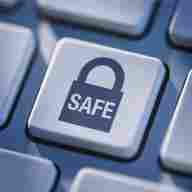Financing the latest tech ain’t cheap, so it’s no surprise that many of us sell off our old gear to pay for new stuff. But before you part ways with your old laptop or computer, ensure you give it a proper goodbye – you don’t want it conspiring with its new owner to empty your bank account or steal your identity, do you?
The decent thing to do is erase every trace of you from the poor thing’s memory. That means a complete wipe of the hard drive, and ensuring your computer can start a happy life with its new owner.
So how do you do it?
The extreme method – 100% effective
Remove the hard drive and take a sledgehammer to it. It’s a messy solution, but an effective one. There’s absolutely no coming back from a vicious physical assault, no matter how good a hacker you are.
But, I suspect your buyer wants the hard drive included. In which case, destroying it will almost certainly affect your asking price. Unless you’re committed to total protection from someone recovering your data, try some of our other solutions instead.
The (slightly less) extreme method – 100% effective
So your buyer is a bit of a stickler and wants a hard drive with his new computer. Some people, eh?
The good news is there’s a way to wipe your hard drive without bludgeoning it to smithereens (fun as that may be): a program that overwrites ALL of your data.
Now this might seem like an easy option, but hold on. First, not all hard drive technology is supported. For example, the free version of DBAN – the best wiper of them all (conforming to Department of Defense standards) – doesn’t support SSDs. And for a guaranteed, certificated erasure you also need to pay for the business version. Whether it’s worth it is another question only you can answer.

The manufacturer method – 99.9% effective?
Whenever you delete a file, it doesn’t just disappear. You’re simply telling the computer that it can be overwritten with something else. So even after doing a manufacturer’s factory restore/reset, while the hard drive seems empty, you can recover data that hasn’t already been overwritten.
In 99.9% of situations, this isn’t a problem. Beyond a factory reset, you have to start buying expensive recovery software or pay others to recover surviving data for you, which is a deterrent for all but the most persistent criminals.
And 99.9% of the time, you’re selling to a genuine buyer – perhaps a friend – and they’ll quickly overwrite your “disabled” data with their own. So unless you suspect your buyer is a cybercriminal, there’s not much to worry about.
To restore/reset a Mac, follow these instructions:
To restore/reset a PC (Windows 10), follow these instructions:
So there you have it: three different ways to wipe your hard drive. Be vigilant with your data and all will be well.

How to encrypt your hard drive and keep your folders and files safe
